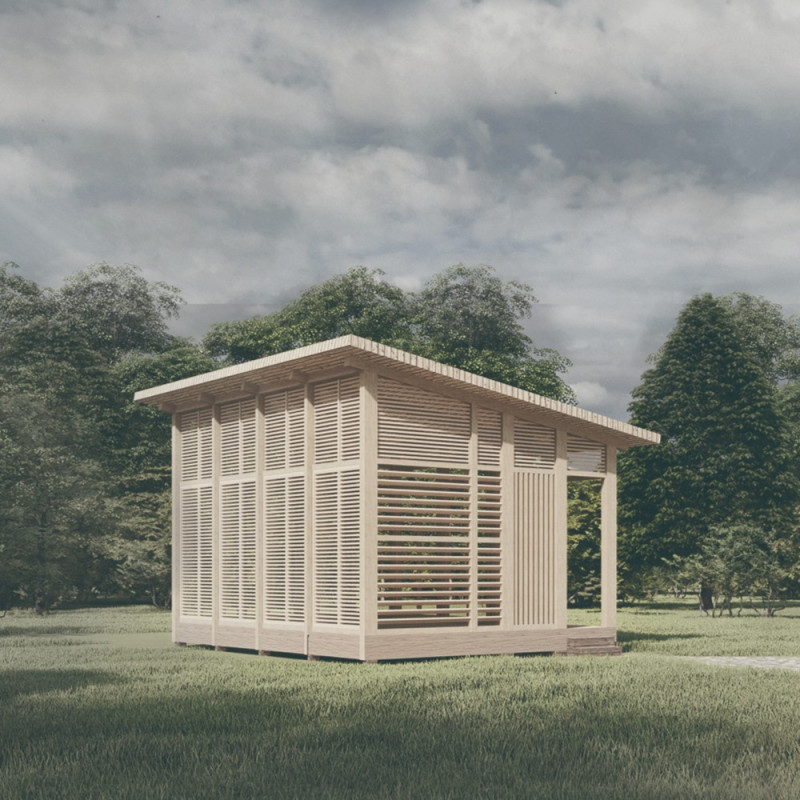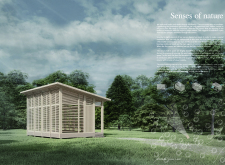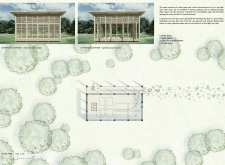5 key facts about this project
The meditation space is thoughtfully integrated into its natural surroundings, promoting both physical and mental well-being. Located in a tranquil environment, the design encourages mindful practices that strengthen connections with nature. The concept centers on creating an inviting space that allows visitors to engage in meditation, contributing to a deeper sense of tranquility. The arrangement includes areas for both communal gatherings and solitary reflection, catering to various meditation needs.
Design Layout
The project is divided into two key sections: the main meditation area and an adjoining deck. This configuration offers users flexibility in choosing how they engage with the space, whether sitting or lying down. The division between public and private spaces allows for a variety of meditation practices, each tailored to enhance user experience. Every section has been carefully considered to ensure it meets the needs of individuals seeking solace or community.
Connection with Nature
The design draws inspiration from the Kiwi bird's sensory modalities, particularly emphasizing sight, sound, and smell. This approach aims to create a rich sensory atmosphere that draws users closer to their surroundings. Features such as strategically positioned openings allow natural light and sounds to enter, encouraging a feeling of being immersed in the environment. As individuals transition into meditation, they can experience a sense of serenity that enhances mindfulness.
Material Choices
Radiata Pine serves as a primary material in the design, reflecting local building traditions in New Zealand. This choice not only contributes to the visual warmth of the meditation space but also enhances the tactile experience for the users. Agathis australis is also included, bringing familiar scents that enrich the meditative atmosphere. By selecting these materials, the design remains grounded in its context, enhancing the overall sensory experience.
Defined Spaces
Specific areas within the design are created for distinct functions, including an entry area, a public meditation space, a section for drying flowers, and a private space for quiet reflection. Each area is designed to support different aspects of meditation and to encourage visitors to engage with the natural setting. These functional zones promote a seamless interaction with the environment, guiding users toward introspection and mindfulness.
Natural light filters through slatted openings, casting patterns that shift throughout the day. The interplay of light and shadow fosters a calming atmosphere, inviting individuals to pause and reflect.






















































